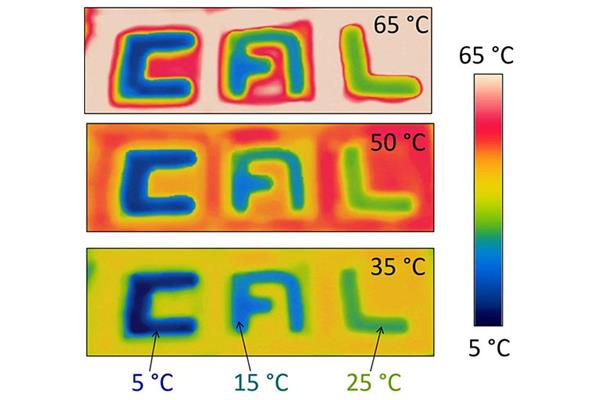
In a paper published in the journal Advanced Materials, two UC Berkeley researchers described how to imbed visual "decoys" into surfaces of objects in a way that can fool people into thinking they detect a specific image in the infrared that actually isn't there. This kind of technology could prove useful for military and intelligence agencies to ensure national security.
Infrared light is invisible to the human eye, but can be detected by a range of devices, such as night-vision goggles and thermal-imaging cameras. The coatings developed by Junqiao Wu, UC Berkeley professor of materials science and engineering, and post-doctoral researcher Kechao Tang can effectively tune target objects into emitting the same infrared radiation as the surrounding environment, making them invisible to infrared detection devices.
Moreover, the coatings, which are made from delicately engineered thin films of tungsten-doped vanadium dioxide, can be manipulated in a way that a person trying to view the object with such a device would instead see a false image.
Tungsten-doped vanadium dioxide is a substance that at certain temperatures can phase shift from an insulator, which suppresses electric conductivity, to a metal, which conducts electricity.
The insulator-metal phase transition can even out, allowing the substance to emit a constant level of thermal radiation over wide range of temperature variations (15-70 degrees Celsius). This state of equilibrium prevents a camera from detecting the true infrared signals that an object normally emits around room temperature.
How the coatings were developed
Berkeley researchers, backed by the National Science Foundation and the Bakar Fellows Program, grew ultra-thin layers of vanadium dioxide (less than 100 nanometres thick) on structures made from borosilicate glass and sapphire. Using pulsed lasers, researchers doped the films with different amounts of tungsten and then transferred the material onto a polyethylene (PE) film tape.
The researchers say this method provides better, more consistent camouflage because the product is mechanically flexible, power free and inherently self-adaptive to temporal fluctuation as well as spatial variation of the target temperature.
Additionally, by manipulating the configuration and composition of tungsten-doped vanadium dioxide on coatings applied to the PE tape, researchers can create an infrared decoy.
"How we grow the material changes the image people ultimately think they see," said Junqiao Wu.
The testing process
In the paper, researchers described encoding the letters C-A-L onto samples that they later placed on the surface of an object. The colour of the letters represents the temperature people see when viewing from an infrared camera. For example, the
blue C shows it is at a constant
5°C, the
lighter blue A at a constant
15°C, and the
green L at a constant
25°C, regardless of the actual temperature of the samples.
Even though the object's actual temperature varies widely from 35-65 degrees Celsius, a person who views the object through night-vision goggles will distinctly see a colder "CAL" that is independent of the actual temperature.
"We can both erase real information and create false information," Wu said, "CAL stays cool when the environment is hot."
This kind of technology could prove useful for military and intelligence agencies, as they seek to thwart increasingly sophisticated surveillance technologies that pose a threat to national security. It might also incubate future encryption technology, allowing information to be safely concealed from unauthorized access.